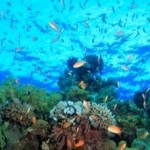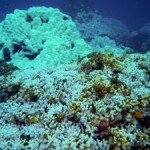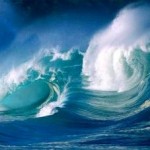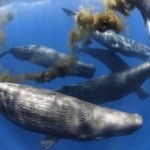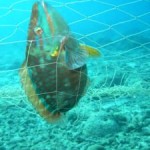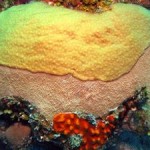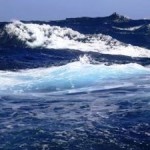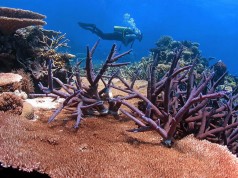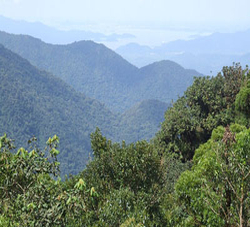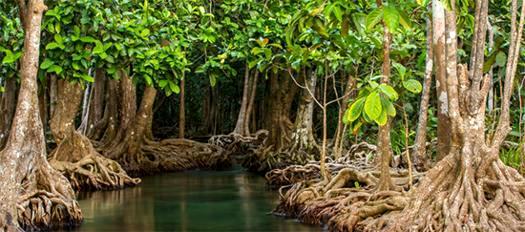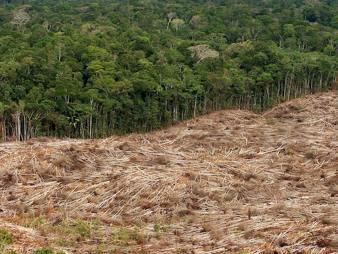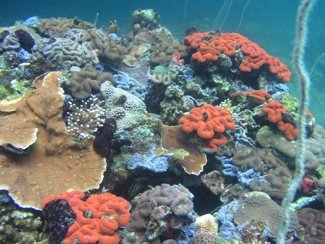
Marine scientists working on the coral reefs of Palau have made two unexpected discoveries that could provide insight into corals’ resistance and resilience to ocean acidification.
The team collected water samples at nine points along a transect that stretched from the open ocean, across a barrier reef, into a lagoon, and into the bays and inlets around the Rock Islands of Palau in the western Pacific Ocean. With each location they found that the seawater became increasingly more acidic as they moved toward land.
“When we first plotted those data, we were shocked,” said chemical oceanographer Kathryn Shamberger of the Woods Hole Oceanographic Institution (WHOI). “We had no idea the level of acidification we would find. We’re looking at reefs today that have levels that we expect for the open ocean in that region by the end of the century.”
Shamberger conducted the fieldwork with other WHOI researchers, including biogeochemist Anne Cohen, as well as with scientists from the Palau International Coral Reef Center.
The National Science Foundation (NSF) funded the research through its Ocean Acidification Program, part of the agency’s Science, Engineering and Education for Sustainability Investment.
“This important study documents a coral reef system that’s apparently resistant to the effects of ocean acidification,” said David Garrison, program director in NSF’s Division of Ocean Sciences. “Understanding what factors account for this will be critical follow-on research.”
While ocean chemistry varies naturally at different locations, it is changing around the world due to increased levels of carbon dioxide in the atmosphere. The ocean absorbs atmospheric carbon dioxide, which reacts with seawater, lowering the water’s overall pH and making it more acidic. This process also removes carbonate ions needed by corals and other organisms to build their skeletons and shells.
Corals growing in low pH conditions, both in laboratory experiments that simulate future conditions and in other naturally low pH ocean environments show a range of negative effects. These include juveniles of various species with difficulty constructing skeletons, fewer varieties of corals, less coral cover, more algae growth and more porous corals with greater signs of erosion from other organisms.
The new research results, published in a paper in Geophysical Research Letters, a journal of the American Geophysical Union (AGU), explain the biological and geomorphological causes of the more acidic waters near Palau’s Rock Islands. The paper also describes a surprising second finding – that the corals living in those more acidic waters were unexpectedly diverse and healthy.
The unusual finding, contrary to what has been observed in other naturally low pH coral reef ecosystems, has important implications for the conservation of corals in all parts of the world.
“When you move from a high pH reef to a low pH neighboring reef, there are big changes, and they are negative changes,” said Cohen, a co-author of the paper and principal investigaor of the project. “However, in Palau wherever the water is most acidic, we see the opposite. There’s a coral community that is more diverse, hosts more species, and has greater coral cover than in the non-acidic sites.”
“Palau is the exception to other places scientists have studied.”
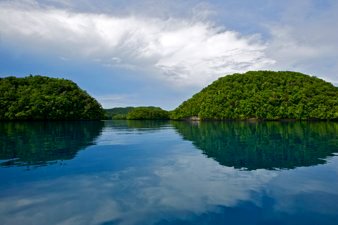
Through analysis of the water chemistry in Palau, the scientists found that the acidification is primarily caused by the shell-building done by organisms living in the water, called calcification, which removes carbonate ions from seawater. A second reason is the organisms’ respiration, which adds carbon dioxide to the water when they breathe.
“These things are all happening at every reef,” said Cohen. “What’s critical is the residence time of the seawater.”
“In Palau’s Rock Islands, the water sits in the bays for a long time before being flushed out,” said Shamberger. “This is a big area that’s a maze with lots of channels and inlets for the water to wind around.”
“Calcification and respiration are continually happening at these sites while the water sits there, allowing the water to become more and more acidic. It’s a little bit like being stuck in a room with a limited amount of oxygen – the longer you’re in there without opening a window, you’re using up oxygen and increasing carbon dioxide.”
Ordinarily, she added, without fresh air coming in, it would become harder and harder for living things to thrive, “yet in the case of the corals in Palau, we’re finding the opposite. Coral cover and diversity actually increase from the outer reefs into the Rock Islands.”
The next steps are to determine whether the corals are genetically adapted to low pH, or whether Palau provides a “perfect storm” of environmental conditions.
“If it’s the latter, it means that if you took those corals out of that specific environment and put them in another low pH environment that doesn’t have the same combination of conditions, they wouldn’t be able to survive,” said Cohen. “But if they’re genetically adapted to low pH, you could put them anywhere.”
“These reef communities have developed under these conditions for thousands of years,” said Shamberger. “These are conditions that are going to be occurring in a lot of the ocean by the end of the century”.

